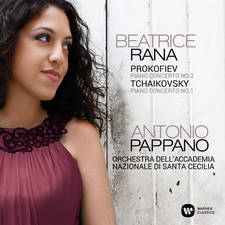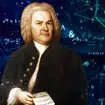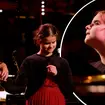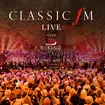10 of Bach’s all-time best pieces of music
5 March 2021, 16:58
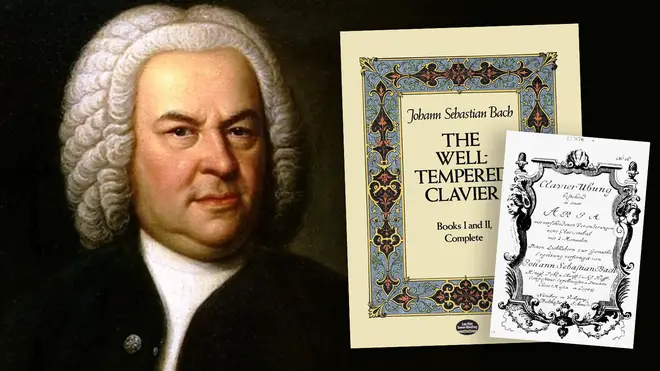
Classical music wouldn’t be classical music without the legacy and lasting supremacy of Baroque composer J.S. Bach’s music. Here are some of his best works.
Ah Bach. Bach’s music is at once majestic and sublime, virtuosic and versatile – and moving beyond words.
J.S. Bach was a Baroque composer and keyboardist who simply defines the entire classical music genre – it feels, to us, like all the important roads in music lead from Bach, and back to Bach.
Bach wrote in almost every genre you could think of – from big orchestral and choral settings, to chamber pieces and instrumental sonatas for a myriad of musical instruments, to enduringly powerful unaccompanied works, and volumes of keyboard music.
To narrow it down to ten works is, of course, ambitious. But below, you’ll find the essential pieces of Bach’s music that we really don’t want you to miss.
Read more: Yo-Yo Ma’s Bach video is the most beautiful thing we’ve ever seen >
-
The Brandenburg Concertos
Bach’s Brandenburg Concertos are a collection of six, three-movement orchestral works, completed by the composer in around 1721 for Prussian royal, the Margrave Christian Ludwig of Brandenburg-Schwedt.
The six concertos demonstrate the sheer complexity and enduringly recognisable melodies typical of Bach. The third concerto, especially, seems to epitomise the Baroque era for many music lovers, underpinning many a film or TV soundtrack still today, and remaining a firm concert hall favourite.

Bach - Brandenburg Concerto No. 3 in G major BWV 1048 - Sato | Netherlands Bach Society
-
The Goldberg Variations
The Goldberg Variations, originally composed for the harpsichord, centre around this most sublime keyboard aria, lightly sprinkled with grace notes and embellishments, but at its core simple and achingly beautiful.
The variations then come, one after the other, and unravel Bach’s wonderful melody into a mind-bogglingly beautiful and complex Baroque work that demands you sit up and notice how ingeniously Bach was able to use any musical device available to him. Incredible.

Lang Lang - Bach: Goldberg Variations, BWV 988: Aria
-
Concerto for Two Violins in D minor
Bach’s Concerto for Two Violins, known fondly as the ‘Bach Double’, is a masterclass in powerful duet writing.
The first movement has the two solo violinists joust with Bach’s joyous melody, before they pause and deeply reflect, with the heartachingly beautiful melodies and chords of the slow second movement.
The concerto closes with a flashy third movement, in which one violin seems to chase the other, just a fraction of a step behind all the way through, making for a thrilling and energetic finale.

Isaac Stern & Gil Shaham: Bach - Concerto No. 3 in D minor for 2 Violins, BWV 1043
-
The Well-Tempered Clavier
All you need to know of Bach’s mastery of keyboard writing is contained here in The Well-Tempered Clavier, books one and two. Both collections contain a prelude and accompanying fugue, written in all 24 major and minor keys of the Western music scale.
The colour and mood of each key comes to life in Bach’s careful and creative compositions, which remain as rewarding for keyboard learners as they do for experienced keyboard masters. In fact, The Well-Tempered Clavier was dubbed as being “for the profit and use of musical youth desirous of learning, and especially for the pastime of those already skilled in this study” by Bach himself.

Piotr Anderszewski – J.S. Bach: Well-Tempered Clavier, Book 2: Prelude No. 12 in F Minor
-
St Matthew Passion
Bach wrote two choral oratorios based on the Passion, or final period, of the life of Jesus in Christianity. The St Matthew Passion is the epitome of Bach’s ability to set sacred choral music and it contains some of the most beautiful melodies, and powerful choral moments found in music.
The aria for mezzo-soprano, with solo violin and orchestral continuo, ‘Erbarme dich, mein Gott, um meiner Zähren Willen’ is one of the most loved from the oratorio – and it’s no surprise. The unbelievably moving music seems to ache and sob, “Have mercy my God...” it weeps.

Bach - Julia Hamari - Matthäus Passion - Erbarme dich
-
Toccata and Fugue in D minor
Another piece attributed to Bach is the slightly terrifying Toccata and Fugue in D minor. Composed for the organ, the piece opens with a spine-tingling flourish at the top of the keyboard, which descends from its lofty heights into a cascade of furious, virtuosic organ writing that never fails to stun.
The piece was use in Disney’s Fantasia soundtrack, and after that for a macabre scene in a 1962 film adaptation of The Phantom of the Opera, and has since remained a bit of a horror soundtrack go-to.

XAVER VARNUS PLAYS BACH'S TOCCATA & FUGUE IN THE BERLINER DOM
-
Six Suites for Solo Cello
Another of Bach’s most recognisable tunes comes from the Suite No. 1 for Solo Cello, part of six suites Bach wrote for the instrument, likely between 1717 and 1723.
The music’s wonderfully undulating melodies and slowly unfolding suspense make it typically ingenious Bach, and what a treat for us that he applied his genius to an instrument as gorgeous and soulful as a cello, alone and magnificent in its solo glory.

Peter Gregson plays the Prelude from Bach's Cello Suite No. 1
-
B Minor Mass
In the B Minor Mass, Bach set the Christian liturgy in one of the most enduring sacred choral works in classical music history. A full mass setting, it consists of a musical setting of the five sections of the ‘ordinarium’ – the Kyrie, Gloria, Credo, Sanctus and Benedictus, and the Agnus Dei – and is a powerful testament to the ability of truly great choral music to speak to faith, and the glory of God.

J.S. Bach: Mass in B minor
-
Violin Partita No. 2
Bach’s Partita in D minor for solo violin is part of a whole set of sonatas and partitas written for the instrument, but this one is a particular knockout.
The fifth movement ‘Chaconne’ is especially striking. It calls for the violinist to play dramatic spread chords from the very beginning – but in such a way as to make them feel suspended, and achingly tense. It’s in the minor key, and the melody progresses in an incredible moving way, making it real soul-reaching stuff. Wow.

Franziska Pietsch plays Bach’s Chaconne
-
Flute Sonata in B minor
Even the humble flute, in Bach’s hands, gets to be a powerful, multifaceted musical instrument with just the single line of melody available to it at any one time.
The B minor sonata for flute and keyboard makes the flute’s horizons absolutely vast, in terms of the melody and dynamic range it calls for, and it’s the most challenging, but satisfying, work for any flautist. We promise that even those not that keen on listening to flute-driven works will find this a satiating listen. Bravo once again, Bach!

Flute Sonata in B Minor, BWV 1030: I. Andante
Love Bach? Give him some backup in the Classic FM Hall of Fame 2021. Vote now for your chance to win an iPad, luxury hamper and smart speaker.
